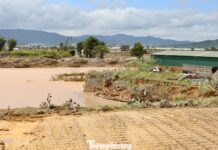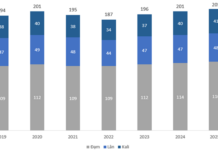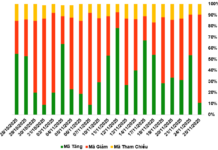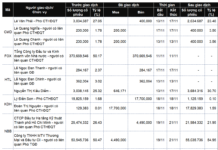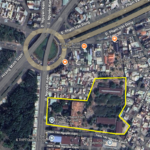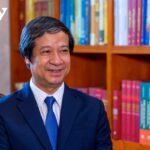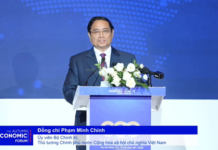The overarching goal of the program is to comprehensively standardize and modernize the education and training system, fostering a fundamental and robust shift in the quality of education and training. It aims to expand learning opportunities for all citizens, ensuring equitable access to education and the right to lifelong learning. The program seeks to better meet the demand for human resources, particularly high-quality talent.
By 2030, the government aims to ensure sufficient physical infrastructure and standardized equipment, with a focus on investing in subject-specific classrooms, STEM/STEAM labs, play areas, and physical fitness environments. Additionally, the plan includes completing the construction of a network of boarding schools and teacher housing in remote, border, and island areas.
 Minister of Education and Training Nguyen Kim Son presents the proposal. Photo: QH |
Another target is to invest in modernizing approximately 8 key public universities to rank among the top 200 in Asia, with at least 1 public university entering the top 100 globally in specific key fields.
The program aims to train 95% of teachers and administrators and 70% of students in digital literacy, educational technology, and artificial intelligence (AI) for management, teaching, and learning. By 2030, at least 30% of educational institutions will effectively implement and apply digital technology, educational technology, and AI. The program also aims to gradually establish English as the second language in the national education system.
By 2035, the government plans to ensure that 100% of preschool and general education facilities meet physical infrastructure standards and are equipped with sufficient teaching materials to support English as the second language in schools.
The total resources mobilized for the program from 2026 to 2035 amount to approximately 580.133 trillion VND, including: central budget capital of about 349.113 trillion VND (60.2%); local budget capital of about 115.773 trillion VND (19.9%); and additional funds from educational institutions and other legal sources.
For the 2026-2030 period, the minimum resources required are 174.673 trillion VND, with central budget capital of 100 trillion VND (57.25%) and local budget capital of at least 45.101 trillion VND (25.82%).
From 2031 to 2035, the estimated resources needed are approximately 405.460 trillion VND.
During the review, Nguyen Dac Vinh, Chairman of the Committee for Culture and Society, expressed support for the program’s necessity. The committee recommends that the government carefully assess the feasibility of the targets to ensure that 30% (by 2030) and 100% (by 2035) of preschool and general education institutions can implement English as the second language.
The infrastructure goals for preschool and general education should focus on providing sufficient standardized classrooms and essential teaching equipment. For teachers and students, there should be clear targets for the number of individuals trained at reputable foreign universities using state funds.
Regarding resource allocation, the committee emphasizes targeted investment, aligning capital with specific goals, ensuring feasibility, and avoiding overlap with other programs.
Tran Thuong
– 10:37 25/11/2025
The Vice Speaker of Parliament: ‘Appointing a Director as a Bureau Chief is an Excellent Idea’
“It’s a brilliant move to appoint a director as a department head, and equally brilliant to promote a department head to the director’s role. We should retain our nation’s top talent but facilitate movement between the public and private sectors.” – Vice President of Parliament, Nguyen Khac Dinh.
Maximizing State Budget Allocation: Strategies for Investing in Education
One of the key areas of focus for the education sector in the 2024-2025 academic year is the efficient utilization of state budget and mobilization of resources for educational investment. This includes fortifying school infrastructure, eliminating temporary classrooms, and developing schools in areas with rapidly growing populations. Additionally, there is a continued emphasis on expanding and enhancing the quality of the teacher workforce.

